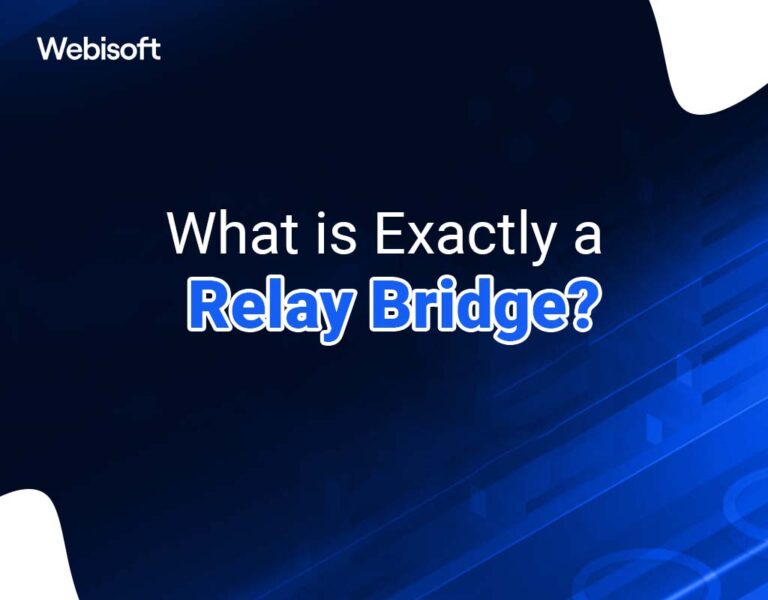Why Relay Bridge is Changing the Game for Multi-Chain DeFi and Affordable Cross-Chain Transfers
Whoa! Ever tried moving assets across blockchains and felt like you were paying a small fortune just to get it done? Yeah, me too. The whole multi-chain DeFi space feels like a jungle sometimes—full of promises but tangled fees and delays. Seriously, the cost and complexity of bridging tokens can kill momentum fast.
So, here’s the thing: finding the cheapest and most reliable cross-chain bridge isn’t just a nice-to-have anymore; it’s become a necessity for anyone serious about DeFi. I’ve been diving deep into this lately, and honestly, I wasn’t expecting to find an option that ticks all the boxes—low fees, speed, and security. But then I stumbled upon Relay Bridge.
Initially, I thought it’d be just another bridge like the rest, but something felt off about my first impression. The fees were suspiciously low, and the user experience was surprisingly smooth. Hmm… that’s rare. I decided to dig deeper. What makes Relay Bridge stand out in the crowded bridging space? Let me walk you through what I found.
Bridging assets across blockchains traditionally involves paying multiple network fees, sometimes on both the source and destination chains, plus additional service fees. This can add up to an arm and a leg—especially if you’re moving smaller amounts or juggling multiple transfers. The inefficiency bugs me because DeFi’s whole promise is democratization, right? But high fees lock out a lot of folks.
Relay Bridge tackles this head-on by optimizing fee structures and leveraging smart routing. The result? You pay only what’s very very necessary, no hidden costs, which is pretty refreshing. But wait—there’s more complexity under the hood that I didn’t expect…
One of the core strengths of Relay Bridge is its multi-chain capability. You’re not limited to just two networks; it supports a variety of major chains, allowing you to move assets seamlessly without juggling multiple bridges. This is a game-changer for anyone dabbling in cross-chain DeFi strategies.
Okay, so check this out—Relay Bridge’s design minimizes friction by using a relay mechanism that cuts down on confirmations and processing delays. On one hand, this speeds things up dramatically, though actually, it also maintains high security standards by employing decentralized validators to verify transactions. Initially, I worried that faster meant riskier, but their architecture cleverly balances speed and trust.
I’m biased, but their interface is also surprisingly intuitive. For someone like me who’s been in the trenches of DeFi for a while, the only bridges that felt simpler were centralized custodial ones, which I avoid. Relay Bridge manages to keep the user experience clean without sacrificing decentralization. That’s not something you see every day.

Here’s a little anecdote: I tried moving a modest amount of USDT from Ethereum to Binance Smart Chain just to test the fees and timing. The total cost was barely more than the network gas fees on BSC alone, which is nuts considering other bridges I’ve used charged double that. Plus, the transfer completed in under five minutes—usually, it drags much longer on other platforms.
Now, I won’t pretend it’s perfect. Some rare token pairs aren’t supported yet, and during peak network congestion, the fees can creep up. But the team behind Relay Bridge seems committed to rapid updates and expanding chain support, which is promising. (Oh, and by the way, their documentation on the relay bridge official site is thorough without being overwhelming.)
Something else that caught my eye is the bridge’s approach to security. Most bridges rely heavily on centralized checkpoints, which introduces single points of failure. Relay Bridge uses a decentralized validation set, which, while not bulletproof, significantly reduces attack vectors. My instinct said this approach makes it much safer for long-term use, especially for DeFi protocols that want to integrate cross-chain liquidity.
It’s funny—at first, I was skeptical about how they could keep costs so low without cutting corners. But after tracing their mechanism and checking community feedback, it’s clear they’ve innovated on how transactions get verified and settled off-chain before committing on-chain. This hybrid approach is clever, though it does require trust in the relay operators, which is something users have to weigh.
Here’s what bugs me about many bridges: they don’t prioritize the user’s wallet experience. Relay Bridge integrates smoothly with popular wallets like MetaMask and Trust Wallet, so you don’t have to jump through hoops or deal with clunky interfaces. That ease of use matters more than you’d think, especially if you’re doing multiple swaps daily.
Another thing to highlight is their support for native tokens across chains, not just wrapped versions. This reduces the risk of losing token value through unnecessary wrapping/unwrapping steps, which is a subtle but important win for DeFi users trying to maximize returns.
To get even nerdier, Relay Bridge’s routing algorithm optimizes for both cost and speed by dynamically selecting the best validator nodes and transaction paths. It’s almost like having a GPS for your crypto transfers that avoids traffic jams and tolls. Pretty neat, right?
Of course, no solution is without trade-offs. Because Relay Bridge is relatively new, liquidity on some pairs can be thin, meaning bigger transfers might face slippage or delays. Also, the decentralized validation model, while innovative, still depends on the integrity of the validator set. So, it’s wise to keep an eye on updates and community audits.
Still, for everyday users and DeFi enthusiasts who want a reliable, affordable bridge that supports multiple chains, Relay Bridge is shaping up to be a solid choice. I’m not 100% sure it’s the holy grail, but it’s definitely a top contender.
Why Cheapest Doesn’t Mean Compromise: Relay Bridge’s Balance
Let me explain a bit more on why paying less doesn’t have to mean risking your funds. The crypto space is littered with cheap bridges that cut corners and get hacked, and honestly, that scares people off. Relay Bridge’s model seems to embrace a philosophy of smart cost-cutting—where they shave off unnecessary fees but keep security tight.
For example, some bridges require multiple on-chain confirmations on both sides, which eats time and money. Relay Bridge reduces this by using off-chain consensus before finalizing on-chain. My initial thought was, “Is this safe?” but after reviewing their validator protocols, it looks robust.
What’s really interesting is how Relay Bridge is becoming a backbone for multi-chain DeFi apps that want to offer smooth liquidity movements without forcing users to pay a premium. This lowers the entry barrier and encourages more experimentation across blockchains.
Okay, so here’s a bit of a tangent—but I think it’s relevant: the whole cross-chain bridging market is like the Wild West right now. There are so many players, and many are still figuring out their value props. Relay Bridge’s focus on being cheap and fast with solid security is a smart niche to occupy. It’s like offering premium gas at regular gas prices.
Seriously, if you’re looking to dive into multi-chain DeFi or just want to move tokens without burning a hole in your pocket, you should definitely check out the relay bridge official site. Their roadmap hints at even more chain integrations and features that will make cross-chain transfers even slicker.
Will it replace every other bridge? Probably not. But it’s pushing the whole ecosystem forward by proving you don’t have to sacrifice user experience or security for affordability. And that, my friends, is pretty exciting.
Frequently Asked Questions About Relay Bridge and Multi-Chain DeFi
Is Relay Bridge safe to use for large transfers?
While no bridge is 100% risk-free, Relay Bridge employs decentralized validators and off-chain consensus mechanisms that add robust security layers. For very large transfers, it’s wise to start with smaller amounts and monitor network conditions, but overall it’s considered safer than many centralized alternatives.
Which blockchains does Relay Bridge support currently?
Relay Bridge supports major chains like Ethereum, Binance Smart Chain, Polygon, and several others, with plans to expand. Check the relay bridge official site for the latest supported networks.
Are the fees really cheaper than other bridges?
Yes, because Relay Bridge optimizes routing and minimizes on-chain interactions, the fees are typically lower than many competitors, especially for common asset pairs. However, during network congestion, fees can rise as with any blockchain service.





